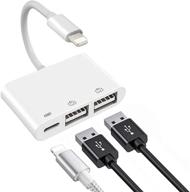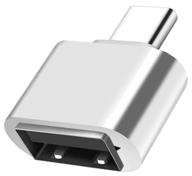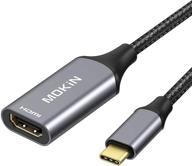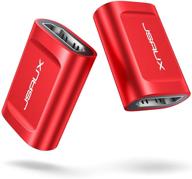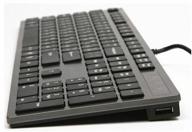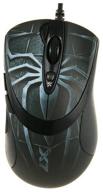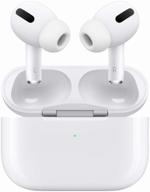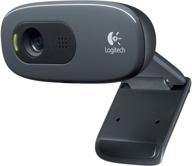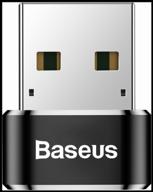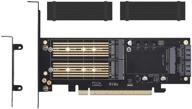Top products in 🔌 Computer Cable Adapters
Types of Computer Cable Adapters
Computer cable adapters allow you to connect devices with different types of ports and connectors. There are many types of adapters available for the various cables and connectors used for computer peripherals, displays, networks, audio and more.
USB Adapters
USB (Universal Serial Bus) is the most common connector used today for connecting peripherals like mice, keyboards, printers, external hard drives and more to a computer. There are several types of USB adapters:
- USB A to USB B - Connects a USB-B device like a printer to a USB-A port on a computer
- USB A to USB C - Connects newer USB-C devices to older USB-A ports
- USB C to USB A - Connects USB-A devices to a USB-C port on a newer laptop
- USB C to USB C - Connects two USB-C devices together
Network Cable Adapters
Network cable adapters allow you to connect devices to wired internet networks. Common types include:
- RJ45 to USB - Connects a laptop's USB port to an RJ45 Ethernet network port
- USB C to RJ45 - Connects a USB-C device to a wired network
- Thunderbolt 3 to RJ45 - Connects a Thunderbolt 3 port to an Ethernet network
Video Adapters
Video adapters enable you to connect monitors and other displays to your computer's video ports. Some common types are:
| Adapter Type | Description |
|---|---|
| VGA to HDMI | Connects a VGA monitor to an HDMI port |
| DVI to HDMI | Connects a DVI monitor to an HDMI port |
| DisplayPort to HDMI | Connects a DisplayPort device to an HDMI port |
| USB C to HDMI | Connects a USB-C device to an HDMI monitor or TV |
Audio Adapters
Audio adapters enable you to connect headphones, speakers or microphones with certain types of connectors to your computer:
- 3.5mm female to USB male - Connects 3.5mm headphones or mic to a USB port
- USB C to 3.5mm female - Connects USB-C headphones to a 3.5mm audio port
- Lightning to 3.5mm male - Connects iPhone/iPad headphones to a 3.5mm port
Power Adapters
You may also need power adapters to connect devices to power sources or charge devices:
- USB C PD wall charger - Charges USB-C laptops and phones
- Lightning to USB cable - Charges iPhones/iPads from USB port
- Barrel jack adapters - Connect devices to wall outlets
With so many connection types, adapters are crucial for connecting peripherals and devices together. Carefully select the right adapter to fit your ports and connectors.
Similar products
Network Cable Adapters
Network cable adapters allow you to connect devices like laptops, PCs, phones and tablets to wired internet networks and routers. They convert between different physical connector types.
Common Network Connections and Adapters
Some common network cable connections and adapters include:
- RJ45 - Standard 8P8C connector used for Ethernet networks
- RJ45 to USB - Connects a laptop's USB port to an Ethernet network
- USB C to RJ45 - Connects a USB-C laptop or phone to a wired network
- Thunderbolt 3 to RJ45 - Connects a Thunderbolt 3 port to Ethernet
Benefits
There are several benefits to using network cable adapters:
- Allow devices without Ethernet ports like phones and tablets to connect to wired networks which are generally faster and more reliable than WiFi.
- Provide a hardwired network connection in situations where WiFi is unavailable or banned.
- Enable older laptops and PCs without certain port types to connect to wired networks.
- Extend the reach of your wired network to devices located further away from routers.
Choosing a Network Adapter
When selecting a network cable adapter, consider the following:
- Compatible ports - Choose an adapter that converts between the ports/connectors on your device and network.
- Supported speeds - Match adapter speeds to your network connection speed.
- Build quality - Look for sturdy construction and quality materials for long life.
- Length - Longer cables provide more flexibility in device positioning.
- Brand reputation - Stick with reputable, established brands for reliability.
Another interesting products
Using Network Adapters
Here are some tips for effectively using network cable adapters:
- Update drivers on devices for adapter compatibility.
- Secure connections to avoid detached cables and ports.
- Attach adapters directly to ports for a snug fit.
- Avoid excessive bending or twisting of adapters.
- Use cable management to reduce clutter.
With the right network cable adapter, you can connect nearly any device to a wired internet connection for fast and reliable connectivity.
Power Adapters - Choosing the Right One and Using Effectively
Power adapters allow you to connect electrical devices to power outlets and charge devices. With many types of adapters available, it's important to choose the right adapter and use them effectively.
Choosing the Right Power Adapter
Consider the following when selecting a power adapter:
- Device compatibility - Choose an adapter that fits the power port on your device.
- Power delivery - Ensure the adapter provides adequate power (watts/volts).
- Safety approvals - Look for reputable safety certification marks.
- Purpose - Decide if you need an AC wall adapter, car charger, etc.
- Features - Consider needs like fast charging, multiple ports, cables.
- Price - Adapters range from cheap to high-end. Avoid the cheapest models.
Types of Power Adapters
Some common power adapter types include:
- USB power adapters - Charge USB devices from AC outlets.
- USB car chargers - Charge USB devices from car power outlets.
- Thunderbolt adapters - Connect Thunderbolt devices to power.
- Lightning power adapters - Charge Apple Lightning devices.
- Barrel jack adapters - Connect devices like cameras to power.
- International plug adapters - Use devices abroad.
Tips for Using Power Adapters Effectively
Follow these tips when using power adapters:
- Inspect regularly for damage - Don't use if frayed or bent.
- Keep contacts clean - Use alcohol to clean periodically.
- Don't overload adapters - Check wattage ratings.
- Use manufacturer's cable - Don't swap with other brands.
- Coil cables neatly - Avoid tangles and tripping hazards.
- Unplug when not in use - Helps avoid hazards.
Choosing the right power adapter and handling them properly ensures devices charge smoothly and safely.
Must-Have Computer Cable Adapters
With the variety of ports and connectors on computers and peripherals today, cable adapters are essential for making devices work together. Here are some of the must-have adapters for connecting modern computer equipment.
USB
USB adapters allow you to connect peripherals and transfer data between devices. Useful types include:
- USB C to USB A - Connect newer USB-C devices to legacy USB-A ports
- USB C to USB C - Connect two USB-C devices together
- USB 3.0 to Ethernet - Connect to wired networks without Ethernet ports
HDMI
HDMI is the standard audio/video interface for HDTVs, projectors and displays. Helpful HDMI adapters include:
- HDMI to VGA - Connect VGA monitors and projectors to HDMI ports
- HDMI to DVI - Connect DVI monitors and TVs to HDMI ports
- Micro HDMI to HDMI - Connect phones/tablets to HDMI cables and ports
Ethernet
For connecting devices like laptops and smart TVs to wired internet, useful Ethernet adapters are:
- USB C to RJ45 Ethernet - Connect USB-C laptops to networks
- Thunderbolt 3 to Ethernet - Connect Thunderbolt 3 devices to networks
- Lightning to Ethernet - Connect iPhones and iPads to wired networks
DisplayPort
DisplayPort is a digital video connection standard. Helpful DisplayPort adapters include:
- DisplayPort to HDMI - Connect DisplayPort computers to HDMI monitors and TVs
- DisplayPort to DVI - Connect DisplayPort devices to DVI displays
- DisplayPort to VGA - Connect to older VGA projectors and monitors
DVI
DVI is an older digital video connection. The most useful DVI adapters are:
- DVI to HDMI - Connect DVI video sources to HDMI displays and TVs
- DVI to VGA - Connect DVI devices to VGA monitors and projectors
With the right adapters, you can connect any computer or device to peripherals, displays, networks and audio equipment - even if the ports don't match up. Every computer user should have a collection of must-have adapters on hand for everyday connectivity needs.
Benefits of Amazon Prime for Buying Computer Cable Adapters
An Amazon Prime membership provides several benefits when purchasing computer cable adapters and other tech accessories.
Free Two-Day Shipping
One of the main perks of Amazon Prime is free two-day shipping on millions of eligible items. This means you can order cable adapters and receive them quickly without paying extra shipping fees.
Having Prime means you don't have to meet any order minimums to qualify for free expedited shipping. Whether you buy a single $5 USB-C adapter or a bundle of 10 different adapters, you'll still get your order rapidly with the standard free Prime delivery.
Free One-Day and Same-Day Delivery
For even faster delivery, Amazon offers free one-day and same-day shipping on qualifying orders over $35 for Prime members. This is extremely useful if you need a specific adapter right away.
One-day and same-day shipping options are available in many major metro areas. Just look for the eligible items marked "Free One-Day" or "Free Same-Day" when browsing or searching.
Free Returns
Amazon Prime also provides free returns within 30 days on most items. This makes it easy to exchange adapters if you get the wrong type or need a different brand.
You can print a prepaid return shipping label and drop the return off at a nearby carrier location. Return shipping fees are refunded back to your original payment method.
Amazon Prime Customer Support
As a Prime member, you get exclusive access to Amazon Prime customer service. The Prime support team is based in the US and can help with any order, shipping or return issues.
You can contact them via online chat or over the phone. For computer accessories purchases, they can walk you through specifics like compatible connections and optimal setup.
Overall, an Amazon Prime subscription provides huge benefits for effortlessly buying the computer adapters and tech gear you need.
Old Computer Cable Types
Computer cable adapters come in different types, each with its own specific use. Here are some of the most common types of computer cable adapters and their uses:
Other types of computer cable adapters include DisplayPort, mini DisplayPort, USB Type-C, Thunderbolt 3, microSD card reader, SD card reader, eSATA, parallel DB25, RS-232, Firewire, and S-Video. It is important to choose the right type of adapter for your specific needs to ensure proper functionality.
Old Computer Cable Types Identification
Here are some of the old computer cable types and their identification:
These old computer cable types have been largely replaced by newer, more advanced cables such as USB Type-C, Thunderbolt 3, and HDMI. However, some older devices still require these older cable types, so it is important to keep them on hand if needed.





